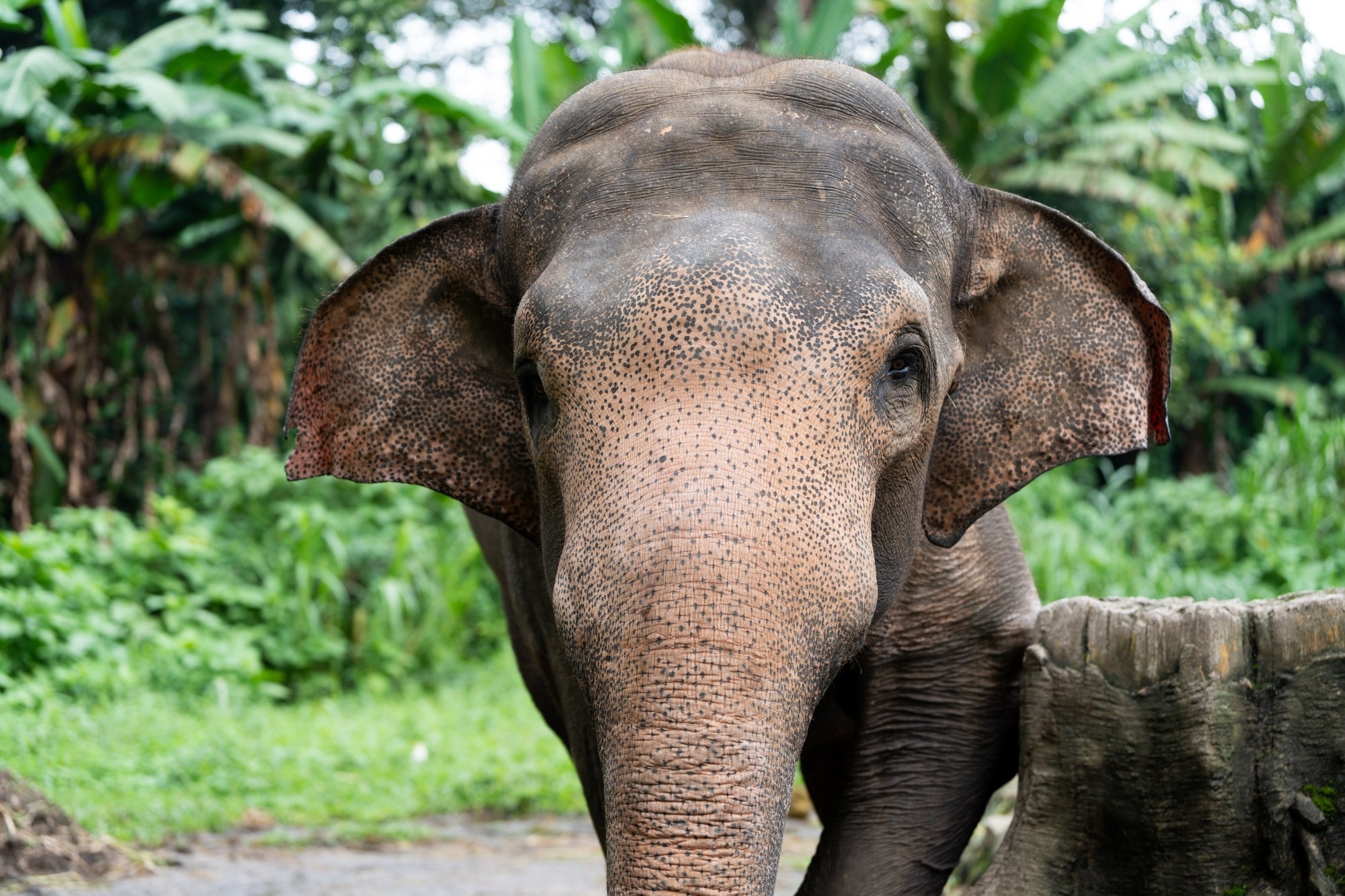 By Pooja Toshniwal PahariaReviewed by Lauren HardakerOct 9 2025
By Pooja Toshniwal PahariaReviewed by Lauren HardakerOct 9 2025In a recent study published in Scientific Reports, researchers investigated recognition of human visual attention by Asian elephants (Elephas maximus) based on body and face orientation, as documented in African savanna elephants (Loxodonta africana).
 Study: Asian elephants (Elephas maximus) recognize human visual attention from body and face orientation. Image Credit: Joseph Christanto/Shutterstock.com
Study: Asian elephants (Elephas maximus) recognize human visual attention from body and face orientation. Image Credit: Joseph Christanto/Shutterstock.com
The researchers found Asian elephants to be the most responsive when both face and body cues align toward them, with body orientation serving as a stronger signal, but only when paired with face orientation.
The results indicate that elephants depend on integrated visual indicators rather than single signals, highlighting their sophisticated socio-cognitive skills, suggesting that sensitivity to human attentional states may confer adaptive advantages in social and ecological contexts.
Animal communication often involves multiple sensory modalities, including visual, auditory, and olfactory signals, which may function independently or in combination. Studies on visual perception predominantly focus on visually dominant taxa, leaving gaps in understanding the evolutionary development of non-primate, primarily non-visual species.
Investigating such species can provide valuable insights into the ecological and social factors shaping communicative sensitivity. Elephants represent a suitable model due to their complex social structure and primary reliance on auditory and olfactory stimuli, despite also exhibiting visual signals and movements.
About the Study
In the study, researchers assessed the interpretation of human visual attentional prompts by Asian elephants, dependent on body and face positioning. The study aimed to contribute to comparative insights into cognitive evolution within the elephant genus.
The study ran from February to March 2024, and included 10 female Asian elephants confined at Thailand’s Golden Triangle Asian Elephant Foundation (GTAEF), with a mean age of approximately 37. Using an intra-subject, repeated-measures study design, all elephants completed four testing sessions on different days, with controlled intervals between sessions.
Each session included five conditions that varied the experimenter’s face and body orientation: face and body toward; face and body away; body toward but face away; face toward but body away; and a baseline condition where the experimenter was absent.
Elephants performed food-requesting tasks, wherein the experimenter placed a mango slice on a tray and subsequently adopted one of the four postures for 20 seconds before feeding the elephant. Each test trial alternated with ‘no-delay’ trials to maintain motivation and ensure understanding of the task.
The experiment took place in a controlled outdoor field equipped with a volleyball playing net and a bamboo holding pen to standardize distance and positioning during the experiments. The researchers video-recorded all trials for behavioral analysis. They quantified the frequency of experimenter-directed gestures (e.g., trunk reaching, rumbling, or body movements) to assess the elephants’ responses under each condition.
Researchers hypothesized that elephants would display more gestures when the experimenter would be present and visually oriented toward them and body alignment would act as a more prominent cue than facial orientation. Data was analyzed using Poisson generalized linear mixed models (GLMMs) to evaluate the effects of face and body orientation on signaling frequency.
Results
Asian elephants adjusted their communicative gestures according to human visual attention, demonstrating sensitivity to combined facial and body orientation gestures. Elephants displayed the highest frequency of gestures when the experimenter’s face and body were both directed toward them, indicating that they rely on the integration of these hints rather than either in isolation.
Body orientation emerged as a more influential visual stimulus than facial orientation, but its influence was significant only when paired with a forward-facing head. With body orientation fixed, face direction alone could not significantly alter gesturing behavior, suggesting that elephants may not be sensitive to facial signals in isolation.
Conversely, when facial direction remained unchanged, elephants performed considerably more gestures when the experimenter’s body faced them, but only if their face was simultaneously toward the elephant.
The results partially supported the prediction that body posture is a more conspicuous visual indicator than facial orientation, possibly due to its larger visible surface area and greater detectability given the limited visual acuity of elephants. Gesture frequency declined across sessions, potentially reflecting learning effects: for example, elephants may have realized that the experimenter would provide food regardless of gesturing.
Implications
The study demonstrates that Asian elephants utilize face and body signals in conjunction to assess human attention, highlighting advanced socio-cognitive abilities, and suggesting convergent evolution with other socially complex species.
The findings have practical implications for captive management: caretakers and trainers can enhance communication and training by ensuring both body and face are oriented toward elephants, improving responsiveness and welfare assessment.
In wild contexts, sensitivity to human stance may help elephants evaluate potential threats from a distance, informing strategies for safer human–elephant interactions. More broadly, the results underscore the value of studying diverse species to understand the evolution of communicative and attentional skills. Future research should expand to wild populations, males, and non-food contexts to clarify ecological and experiential influences.
Journal Reference
Jim, HL., Yamamoto, S., Bansiddhi, P. et al. (2025). Asian elephants (Elephas maximus) recognise human visual attention from body and face orientation. Sci Rep., 15, 32623. DOI: 10.1038/s41598-025-16994-3. https://www.nature.com/articles/s41598-025-16994-3